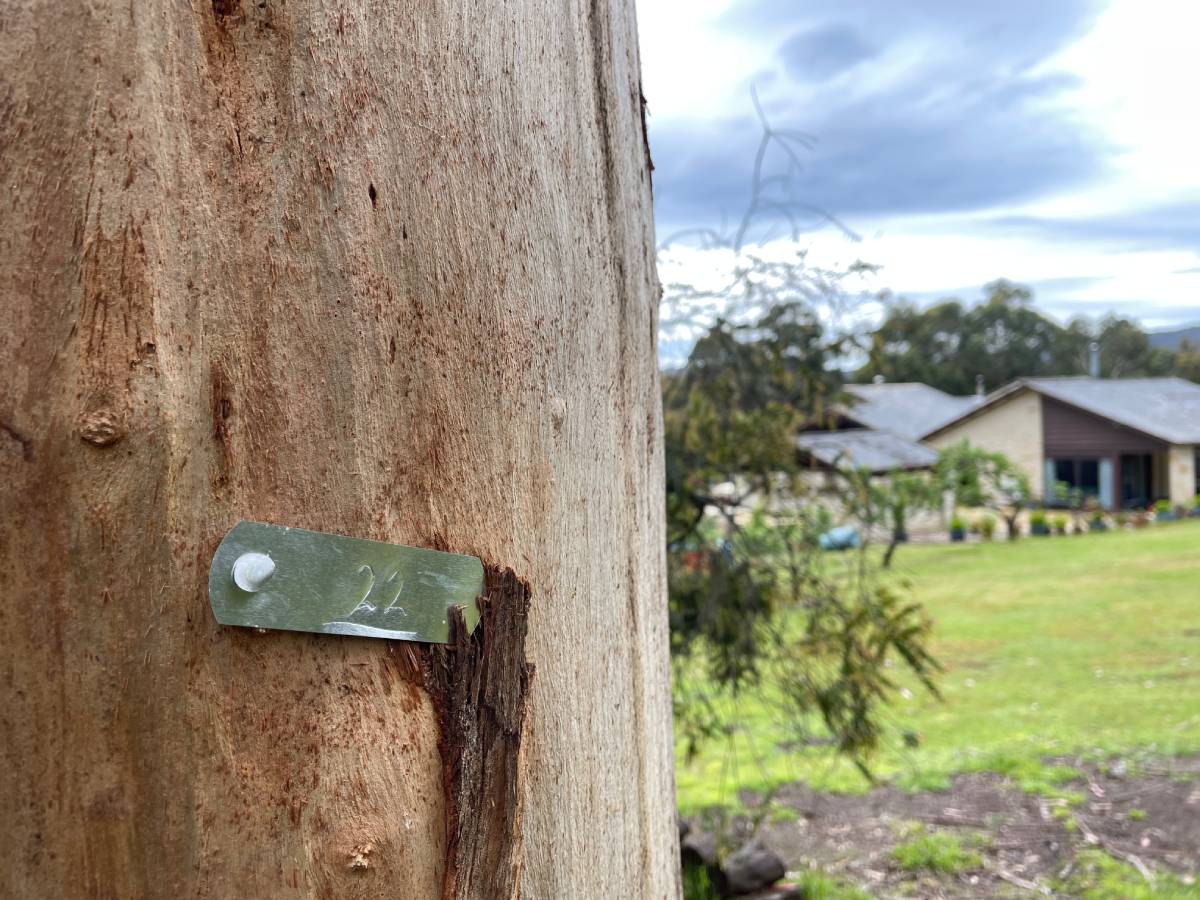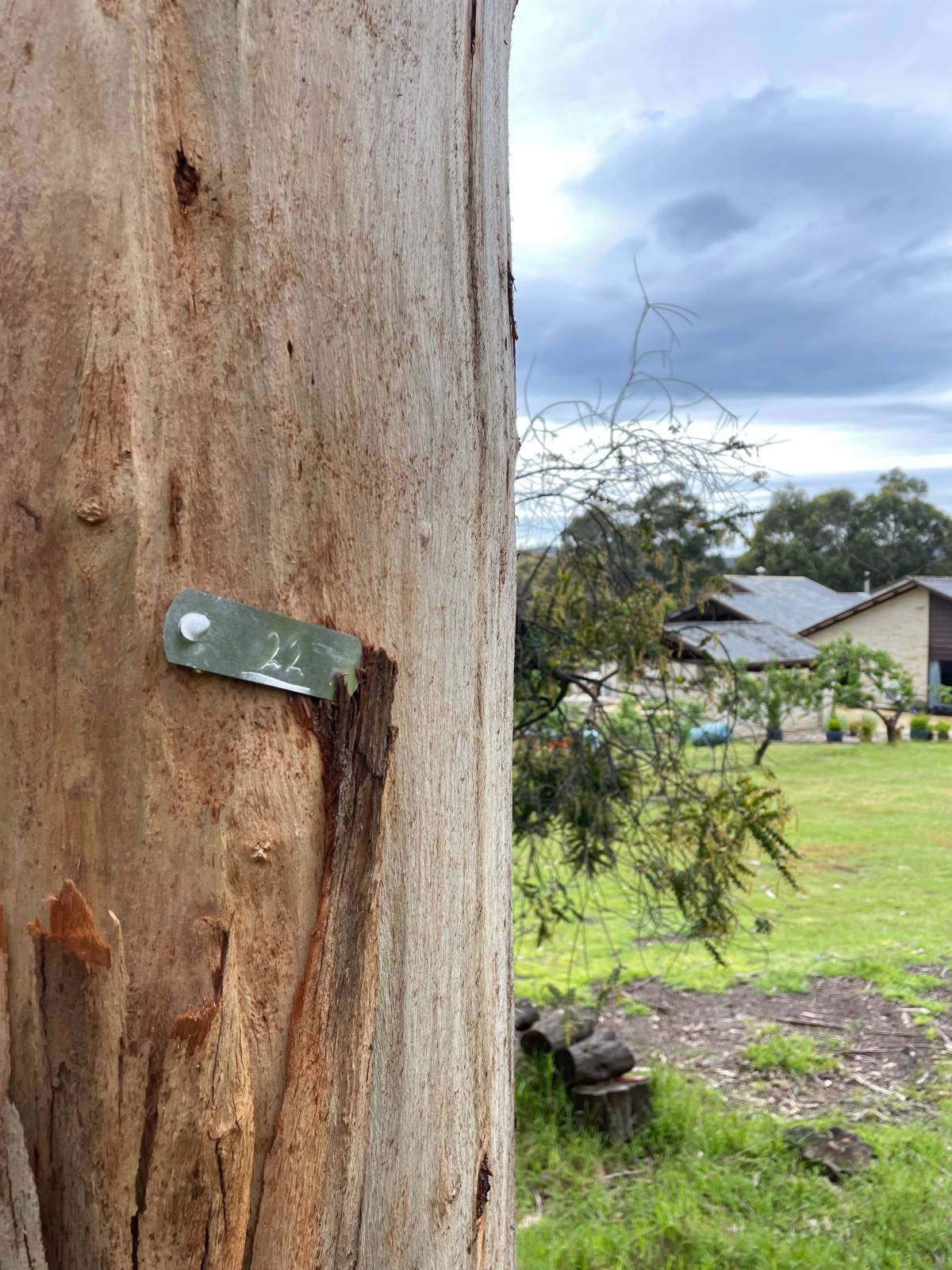What is tree tagging?
‘Tagging’ a tree means attaching a physical tag onto the tree that clearly displays its identifying number. The identifying number should correspond with all arboricultural reports and site drawings so there is no confusion between trees. This is particularly important on large sites or sites with multiple trees.
How are the trees tagged?
There are different methods for tagging trees. Some methods include:
- Painting the identifying number on to the trunk of a tree
- Wrapping tape or ribbon around branches or trunks with the identifying number written on the tape
- Nailing or screwing a metal or plastic tag into the tree
What method do you use to tag a tree?
We have found the best method for longevity purposes is the use of aluminium tags. We find that paint can wear off the tree (or fall off with shedding bark) and be unsightly, and tape and ribbon can degrade or fall off the tree and litter the site.
We choose to use aluminium tags as they remain in good condition and are legible for the duration of the development. We place the tags at eye height so that they are easily identifiable from a distance. We also inscribe the identifying number onto the tag so it will not wash or wear off.
The damage to the tree is minute as we use a small gauge, aluminium nail. We use aluminium instead of other metals as it is light weight and soft. In the event that a tree needs to be removed, the aluminium wont damage equipment, such as chainsaws.

An example of a tree tagged by Tasmanian Arboricultural Consultants.
Why is important to tag a tree?
On larger sites, or for someone new to the site, it can be hard to differentiate between the trees on the ground and in the report. Some of our arboricultural reports include pruning recommendations or protection measures for trees that are near one another. Sometimes a photo alone is insufficient to clearly tell the trees apart.
By tagging the trees and using the same identifying numbers that are in the arboricultural reports we can ensure anyone can identify a particular tree. This is especially useful in development sites where specific trees may need to be pruned or removed near others that are to be retained.
When in the development stage does tree tagging take place?
If no other arboricultural reports have been undertaken, or if identifying numbers have not yet been assigned to the trees, we will tag the trees on our initial tree assessment. Identifying numbers usually follow sequential order from the first tree that is assessed.
The initial tree assessment will likely be a preliminary arboricultural report if the development is still in the design process. Having an arborist involved early on in the process can avoid designs literally going back to the drawing board.
Contact us for a chat about how we can help make the development process more efficient.

Blog written by Mark Fahy
Mark has a diploma in arboriculture (AQF level 5) and is a registered Quantitative Tree Risk (QTRA) assessor. He has been an arborist for over 10 years and is passionate about trees. He is committed to providing evidence-based solutions and thorough reports to clients. Mark is specifically enthusiastic about living with trees in the ever-changing urban environment.

